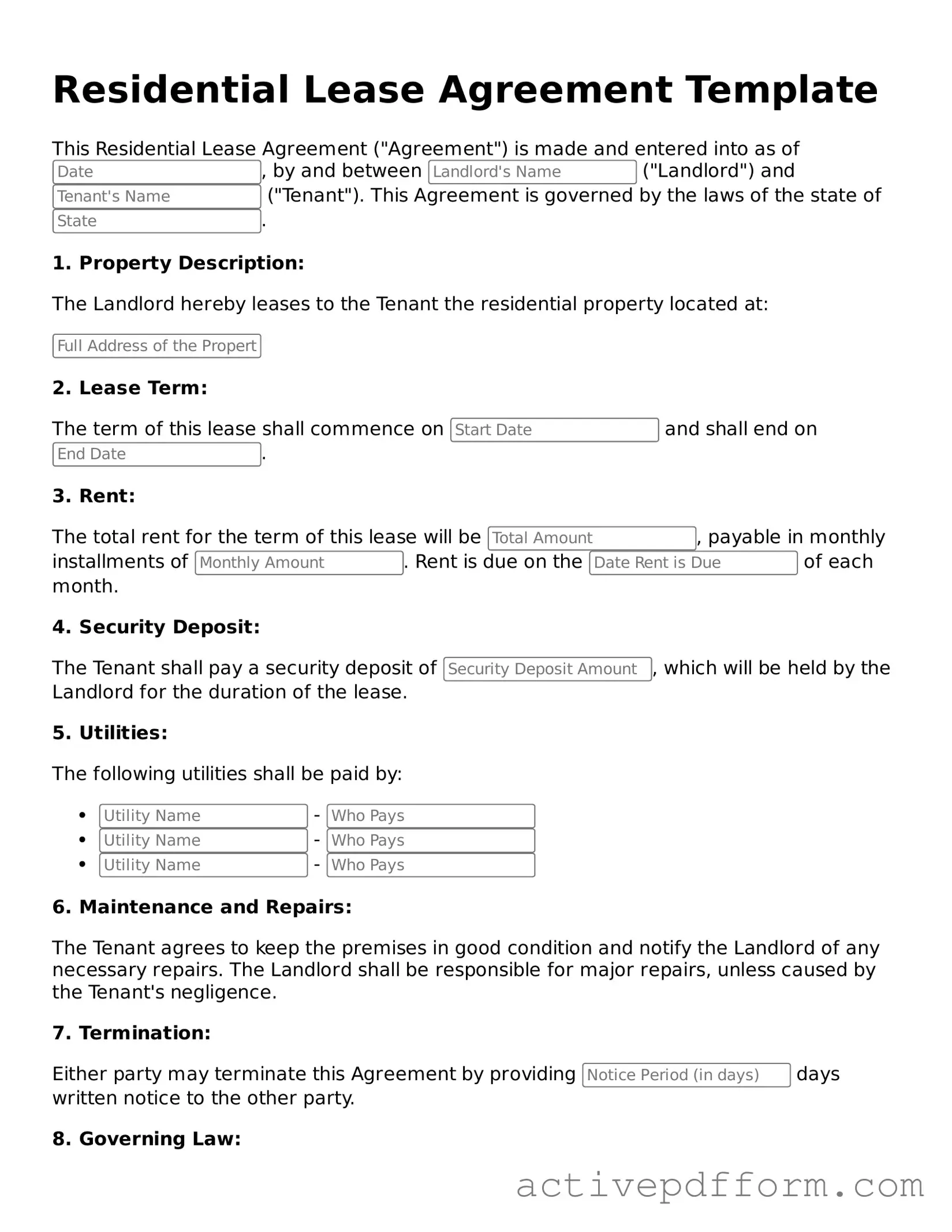What is a Residential Lease Agreement?
A Residential Lease Agreement is a legally binding contract between a landlord and a tenant. This document outlines the terms and conditions under which a tenant can occupy a rental property. It typically includes details such as the rental amount, duration of the lease, and responsibilities of both parties.
What are the key components of a Residential Lease Agreement?
Key components often include the names of the landlord and tenant, property address, lease term, rent amount, security deposit details, maintenance responsibilities, and rules regarding pets or smoking. It may also cover what happens if the tenant fails to pay rent or breaks the lease early.
How long is a typical lease term?
Lease terms can vary widely, but they commonly range from six months to one year. Some leases may be month-to-month, providing flexibility for both landlords and tenants. It is important to review the lease to understand the specific term agreed upon.
Can a Residential Lease Agreement be modified?
Yes, a Residential Lease Agreement can be modified, but both parties must agree to the changes. Modifications should be documented in writing and signed by both the landlord and tenant to ensure clarity and legal enforceability.
What happens if the tenant wants to terminate the lease early?
If a tenant wishes to terminate the lease early, they should first review the agreement for any clauses related to early termination. Typically, tenants may be required to provide notice and may incur penalties or forfeiture of the security deposit. Open communication with the landlord can sometimes lead to a mutually agreeable solution.
Is a Residential Lease Agreement required by law?
While a written Residential Lease Agreement is not always legally required, it is highly recommended. Having a written agreement helps protect the rights of both landlords and tenants, reducing misunderstandings and providing a clear reference for the terms of the rental arrangement.
What should a tenant do if they have issues with their landlord?
If a tenant encounters issues with their landlord, they should first attempt to resolve the matter through direct communication. If that does not work, reviewing the lease agreement for relevant terms can provide guidance. In some cases, seeking assistance from local housing authorities or legal aid organizations may be necessary.
What are the consequences of breaking a Residential Lease Agreement?
Breaking a Residential Lease Agreement can lead to various consequences. These may include losing the security deposit, being held responsible for remaining rent payments until a new tenant is found, or even facing legal action. Understanding the terms of the lease can help clarify potential repercussions.
